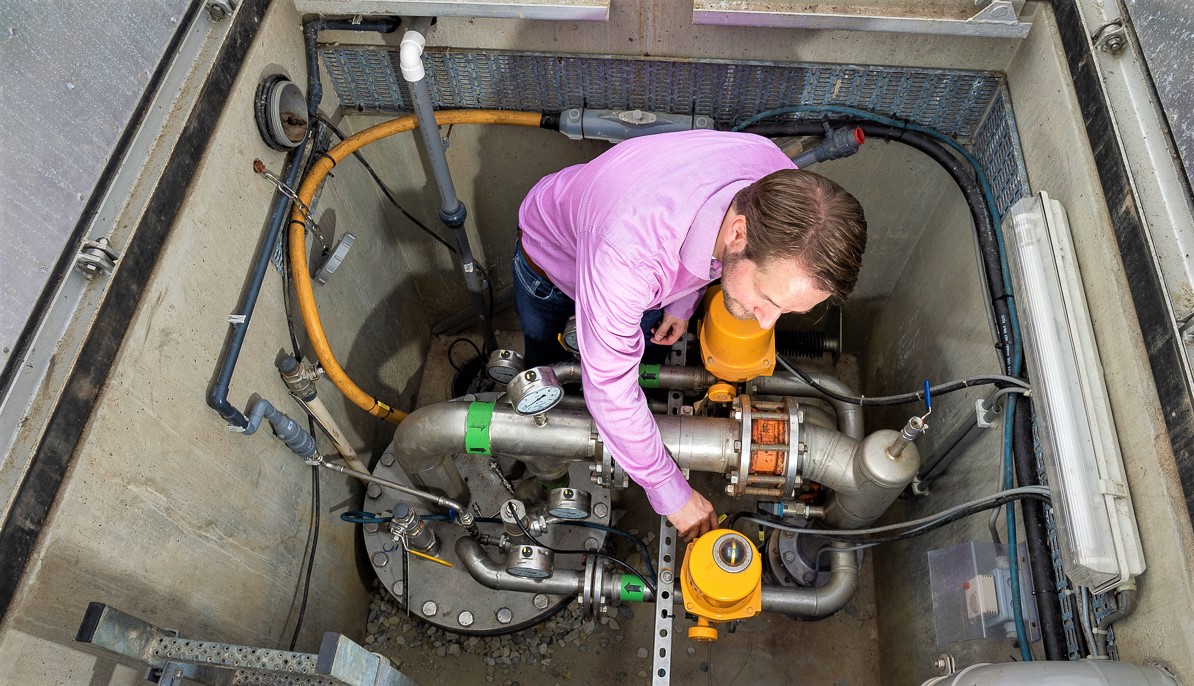Heating and cooling when you need it!
There’s heat in the summer and cold in the winter: energy that’s freely available for nothing. But what we want is heating in winter and cooling in the summer; we don’t need the energy when it’s actually available. The best solution is to store the heat and cold more effectively. Underground, in order to pump it up when you need it.
A tried-and-tested sustainable solution
TU Delft was one of the first major organisations in the Netherlands to store heat and cold underground. The first groundwater well was drilled in 1996, followed in 1998 by four more to heat and cool the EEMCS building. TU Delft is increasingly making use of aquifer thermal energy storage (ATES). It is a tried-and-tested sustainable solution, as the figures clearly reveal. In the winter of 2017, the ATES for the EEMCS building alone supplied 1.3 GWh of heat. That amounts to a gas saving and CO2 reduction of 20% for the EEMCS building.
The new systems use a heat pump and the connected buildings are now all gas-free. ATES not only saves on gas, but also consumes less electricity. The source pump that pumps water from the groundwater well needs much less electricity than a regular cooling system.
Better for the environment
TU Delft now has a total of nine ATES systems. The heating and cooling systems of eleven buildings are connected to them. In 2016, these supplied 16,000 GJ of heat in total, achieving a saving of 500,000 to 600,000 m3 in gas consumption. That amounts to approximately 5% of TU Delft’s total gas consumption, 10 million m3. In terms of reduced CO2 consumption, that is the equivalent of 1,000 tCO2, 5% of TU Delft’s total CO2 footprint.
From a semi-collective to a ring system
TU Delft currently applies a semi-collective system for its ATES, which means that no more than two buildings are connected to a single ATES. However, more may be possible. The options of a “ring system” are currently being investigated, potentially enabling one ATES to cool more than two buildings. In addition, any excess heat from one building could then immediately be transferred to another building, with no need for storing it in the ground first. This offers advantages of scale and is even more sustainable.
How does an ATES system work?
Below the area surrounding TU Delft, there are 24 hot water and cold water wells underneath the campus. The deepest go down to 140 m. The newest ATES systems use heat pumps. Annually, 1.2 billion litres of water are pumped to the cold and hot groundwater wells. If all ATES systems are activated at the same time, they pump 750,000 litres of water every hour!
